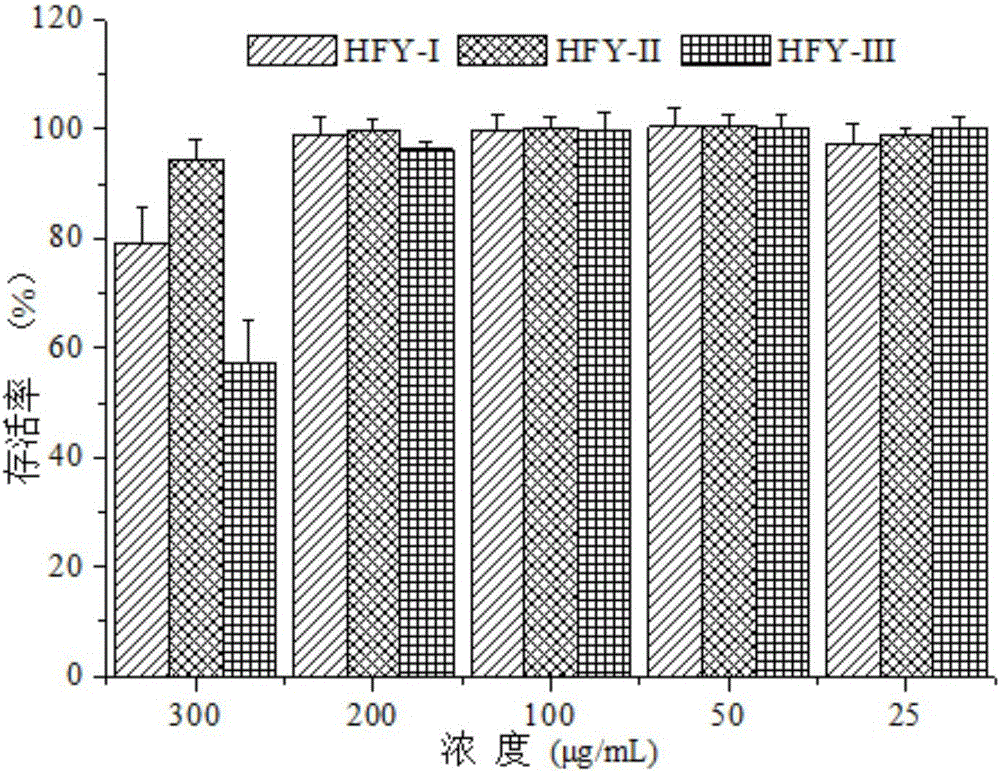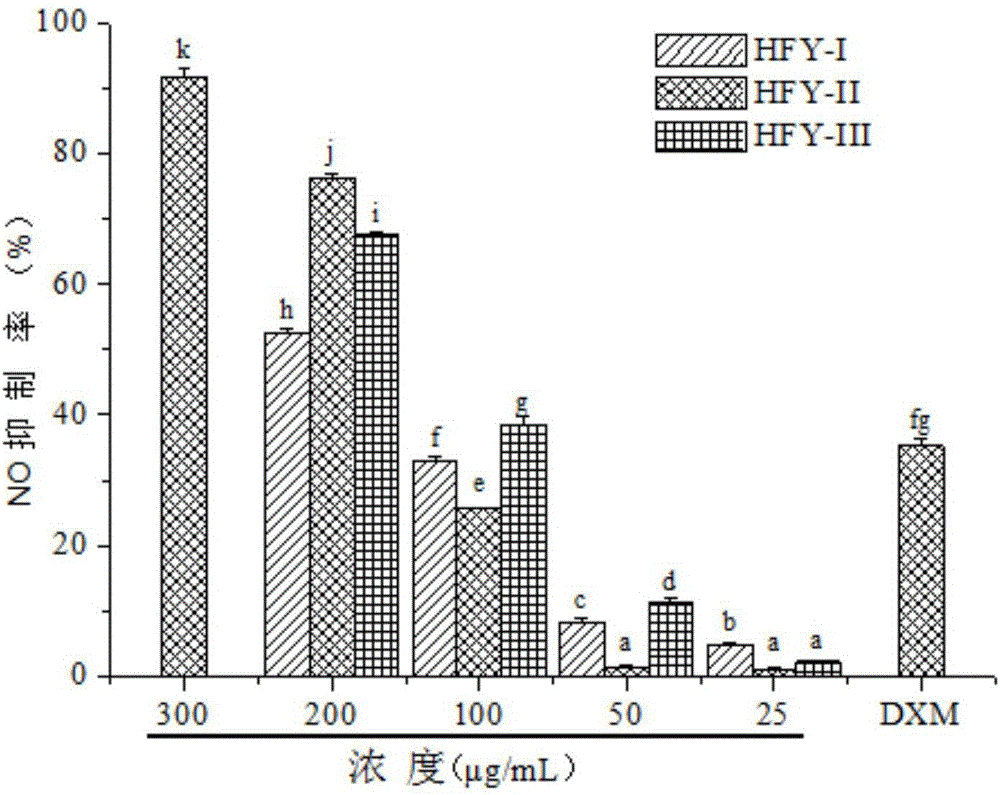Hibiscus sabdariffa volatile oil, preparation method and application to preparation of anti-inflammatory drugs
A technology of roselle and volatile oil, applied in the directions of anti-inflammatory agents, drug combinations, antipyretics, etc., can solve the problem of whether roselle volatile oil is anti-inflammatory or not.
- Summary
- Abstract
- Description
- Claims
- Application Information
AI Technical Summary
Problems solved by technology
Method used
Image
Examples
Embodiment 1
[0059] Embodiment 1 prepares Roselle volatile oil I from Roselle
[0060] (1) Crush roselle (Hibiscus sabdariffa) and sieve to obtain roselle coarse powder; weigh 100g of roselle coarse powder, add 2000mL of distilled water to a 5000mL round bottom flask, shake well and soak for 30min; obtain the extract ;
[0061] (2) Accurately connect the steam distillation device, place the extract obtained in step (1) in the steam distillation device, and add distilled water from top to bottom to the scale until it overflows ( Figure 14 ), using steam distillation to extract volatile oil: after boiling, keep at 100°C for 6 hours; stop heating and cool for 30 minutes to condense all the volatile oil in the condensing tube to reduce volatilization; release the distilled water in the scale section, and then use ether to distill the volatile oil in the condensing tube Transfer the volatile oil to the Erlenmeyer flask, add excess anhydrous sodium sulfate to remove water (slowly add anhydrous...
Embodiment 2
[0062] Embodiment 2 prepares Roselle volatile oil I from Roselle
[0063] (1) Crush roselle (Hibiscus sabdariffa) and sieve to obtain roselle coarse powder; weigh 100g of roselle coarse powder, add 3000mL of distilled water to a 5000mL round bottom flask, shake well and soak for 40min; obtain extract ;
[0064] (2) Accurately connect the steam distillation device, place the extract obtained in step (1) in the steam distillation device, and add distilled water from top to bottom to the scale until it overflows ( Figure 14 ), using steam distillation to extract volatile oil: after boiling, keep at 100°C for 5 hours; stop heating and cool for 20 minutes to condense all the volatile oil in the condensing tube to reduce volatilization; release the distilled water in the scale section, and then use ether to distill the volatile oil in the condensing tube Transfer the volatile oil to the Erlenmeyer flask, add excess anhydrous sodium sulfate to remove water (slowly add anhydrous sod...
Embodiment 3
[0065] Embodiment 3 prepares Roselle volatile oil I from Roselle
[0066] (1) Crush roselle (Hibiscus sabdariffa) and sieve to obtain roselle coarse powder; weigh 100g of roselle coarse powder, add 1000mL of distilled water to a 5000mL round bottom flask, shake well and soak for 1h; obtain the extract ;
[0067] (2) Accurately connect the steam distillation device, place the extract obtained in step (1) in the steam distillation device, and add distilled water from top to bottom to the scale until it overflows ( Figure 14 ), using steam distillation to extract volatile oil: after boiling, keep at 100°C for 8 hours; stop heating and cool for 40 minutes to condense all the volatile oil in the condensing tube to reduce volatilization; release the distilled water in the scale section, and then use ether to distill the volatile oil in the condensing tube Transfer the volatile oil to the Erlenmeyer flask, add excess anhydrous sodium sulfate to remove water (slowly add anhydrous so...
PUM
 Login to View More
Login to View More Abstract
Description
Claims
Application Information
 Login to View More
Login to View More - Generate Ideas
- Intellectual Property
- Life Sciences
- Materials
- Tech Scout
- Unparalleled Data Quality
- Higher Quality Content
- 60% Fewer Hallucinations
Browse by: Latest US Patents, China's latest patents, Technical Efficacy Thesaurus, Application Domain, Technology Topic, Popular Technical Reports.
© 2025 PatSnap. All rights reserved.Legal|Privacy policy|Modern Slavery Act Transparency Statement|Sitemap|About US| Contact US: help@patsnap.com



